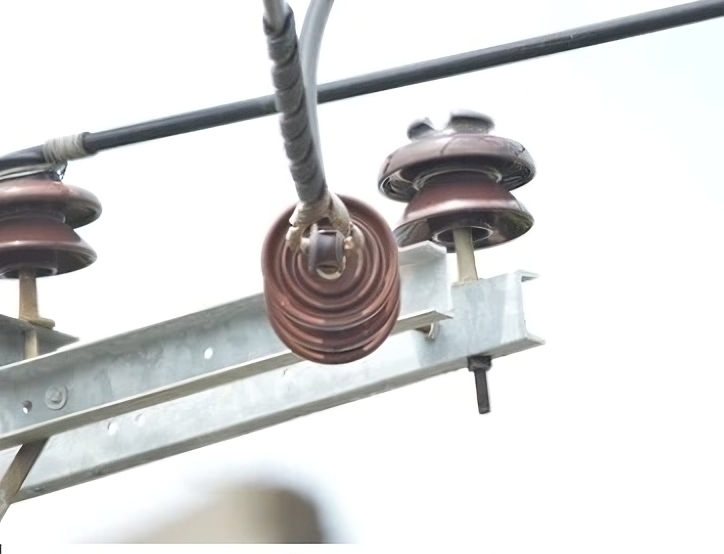
Brazil’s solar energy sector experienced a remarkable surge recently that transformed the energy landscape. The solar energy output increased to 50 GW, making it the sixth country with the largest output. This is after countries like China, Japan, the United States, India, and Germany. Solar energy increased from distributed generation and utility-scale projects. Distributed generation contributes to 33.5 GW and 16.5 GW from utility-scale projects. Solar energy now accounts for 20.7% of Brazil’s total power capacity. This makes it Brazil’s second-largest energy source after hydroelectric power. In 2024, Brazil added 13 GW of new PV capacity with 119 solar plants installed. This increase highlights Brazil’s commitment to expanding its renewable energy infrastructure. It also helps in reducing the carbon footprint in the country. Insulator pins serve a crucial role in solar panel installations to ensure proper electrical insulation and safety.
Insulator pins are able to prevent electrical current from flowing to unintended paths. They also ensure the current flows through the designated conductors. The insulatoin the country pins support and secure the conductors in place, maintaining the correct spacing and alignment. The insulator pins are from materials that can withstand harsh environmental conditions. These include UV radiation, temperature fluctuations, and moisture. The insulator pins provide proper insulation and support to reduce the risk of electrical accidents. The Insulators enhance the safety of the solar panel system.
Significance of insulator pins in Brazil’s increased solar output
The insulator pin plays a crucial role in ensuring the reliability and efficiency of Brazil’s electrical grid as solar energy output increases. It helps in maintaining grid stability, enhancing safety, and supporting the infrastructure needed for large-scale renewable energy deployment. Insulator pins support the nation’s transition to a more sustainable and resilient energy future.

- Grid reliability and stability – insulator pins support the safe transmission of high-voltage electricity. This is by preventing current leakage between the conductor and supporting structures. They reduce energy losses along transmission lines, which helps in transferring solar power from remote solar farms to urban centers.
- Supporting distributed solar generation – insulator pins are crucial in low-voltage networks that supply energy to the grid. This ensures safe and efficient energy distribution from residential and commercial systems.
- Safety and durability – insulator pins are made from durable materials such as porcelain, glass, or composite polymers. This ensures long-term reliability in harsh environmental conditions. Insulator pins provide protection by preventing electrical discharges from damaging transmission lines.
- Infrastructure development – high-quality insulator pins reduce maintenance costs by preventing outages. They also contribute to the cost-effectiveness of solar energy projects, which makes them more competitive.
- Integration of solar farms into the grid – large-scale solar farms need strong transmission infrastructure to deliver power over long distances. They support the high-voltage lines that connect the solar farms to the national grid.
Challenges faced during the construction and operation of solar farms in Brazil
Brazil’s commitment to renewable energy and favorable natural conditions provides opportunities for growth in the solar sector. These opportunities include technological advancements, market growth, abundant solar resources, economic opportunities, and environmental goals. Addressing these challenges requires policy reforms, investment in grid infrastructure, local community engagement, and workforce development. At TTF power, we are a one-stop-shop for utility pole hardware fittings, transmission line accessories and power line construction equipment, providing our customers with the most extensive range of products in the industry, excellent value and knowledgeable service. These challenges include:

- Environmental impact – the rapid expansion of solar farms can lead to environmental degradation and impact local agriculture.
- Infrastructure and grid integration – upgrading and expanding the electrical grid to accommodate increased solar output can be a challenge. Ensuring reliable transmission and distribution infrastructure is critical for the success of solar projects.
- Financial constraints – securing funding and investment for large-scale solar projects can be challenging. Access to affordable financing and incentives is also essential for project viability.
- Community disputes – solar projects can lead to conflicts with local communities over land use. It is important to ensure community engagement and fair compensation for smooth project implementation.
- Regulatory and policy challenges – securing the regulatory landscape and necessary permits can be time-consuming and complex. Clear and consistent policies are necessary to support the growth of the solar sector.
- Maintenance and operations – solar farms need skilled labor and resources to ensure long-term maintenance and efficient operation. It is crucial to address these operational challenges to maximize the benefits of solar energy.
- Supply chain and logistics challenges – Brazil depends on imported solar panels, inverters, and other components. Global supply chain disruption can delay projects. Moving large equipment to remote areas with underdeveloped infrastructure can be costly.